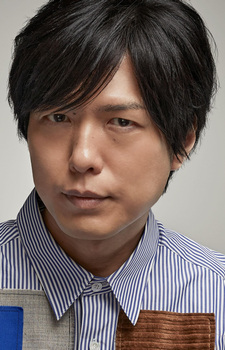
Hachimitsu to Clover
Summary: Yuuta Takemoto, a sophomore at an arts college, shares a cheap apartment with two seniors—the eccentric Shinobu Morita, who keeps failing to graduate due to his absenteeism, and the sensible Takumi Mayama, who acts as a proper senior to Takemoto, often looking out for him.
Takemoto had not given much thought to his future until one fine spring day, when he meets the endearing Hagumi Hanamoto and falls in love at first sight. Incredibly gifted in the arts, Hagumi enrolls in Takemoto's university and soon befriends the popular pottery student Ayumi Yamada. Ayumi is already well acquainted with the three flatmates and secretly harbors deep feelings for one of them.
Hachimitsu to Clover is a heartwarming tale of youth, love, soul-searching, and self-discovery, intricately woven through the complex relationships between five dear friends.
[Written by MAL Rewrite]
Description
Yuuta Takemoto, a sophomore at an arts college, shares a cheap apartment with two seniors—the eccentric Shinobu Morita, who keeps failing to graduate due to his absenteeism, and the sensible Takumi Mayama, who acts as a proper senior to Takemoto, often looking out for him.
Takemoto had not given much thought to his future until one fine spring day, when he meets the endearing Hagumi Hanamoto and falls in love at first sight. Incredibly gifted in the arts, Hagumi enrolls in Takemoto's university and soon befriends the popular pottery student Ayumi Yamada. Ayumi is already well acquainted with the three flatmates and secretly harbors deep feelings for one of them.
Hachimitsu to Clover is a heartwarming tale of youth, love, soul-searching, and self-discovery, intricately woven through the complex relationships between five dear friends.
[Written by MAL Rewrite]
Hachimitsu to Clover Trailers
Hachimitsu to Clover Pictures
Hachimitsu to Clover Review
Hachimitsu to Clover — Yuuta Takemoto, a sophomore at an arts college, shares a cheap apartment with two seniors—the eccentric Shinobu Morita, who keeps failing to graduate due to his absenteeism, and the sensible Takumi Mayama, who acts as a proper senior to Takemoto, often looking out for him. This overview is intentionally spoiler-free and focuses on tone and intent rather than plot specifics.
Thematically, It sits firmly within Comedy, Drama, Romance conventions as a TV work and has garnered attention (MAL score: 7.98). This work explores character dynamics, tonal shifts, and the interplay between narrative ambition and execution. The story's pacing and tonal choices are crafted to complement the central ideas, often emphasizing atmosphere and emotional truth over explicit exposition. The show's ability to evoke a consistent mood — whether melancholic, exuberant, or contemplative — is a recurring strength, and the scenes are constructed so viewers can infer stakes without needing explicit spoilers.
Characterization is a core pillar here. Protagonists and supporting figures are written with distinct motivations and narrative roles; even when archetypal, the series invests in small behavioral details that make choices feel earned. Character arcs are handled with an eye for gradualism: development often arrives through incremental beats rather than abrupt, expository shifts. The interactions between characters create texture, and relationships are used to illuminate both personal flaws and larger thematic concerns.
On the visual front, production values play a significant role. The animation quality varies by sequence but frequently showcases thoughtful direction and composition. Background art, framing, and color palettes are used deliberately to support tone — quieter scenes favor muted palettes while action or heightened emotional beats employ brighter, more kinetic visuals. Direction choices, such as camera movement and shot selection, often elevate scenes beyond their raw script, creating moments that linger in the viewer's mind.
The soundscape — score, incidental music, and sound design — complements the visual language. Music cues are placed to maximize emotional resonance without manipulating the audience with melodrama; this restraint often leads to more authentic emotional payoff. Sound design punctuates key moments, and when the series leans on silence, those quieter moments are given weight by measured audio choices.
Pacing and structure are handled with craft. Episodes are arranged to build tension and release methodically, and the narrative rarely rushes through important emotional beats. That said, the deliberate pacing may feel slow to viewers who prefer faster plot turnover; the reward is greater nuance and an accumulation of meaning across the series. Accessibility is generally good — one can appreciate surface-level pleasures, while repeat or attentive viewing reveals additional layers.
No title is without flaws. Occasional unevenness in subplots or variable animation across episodes can be distracting. Some tonal shifts might feel abrupt if you expect uniformity; others will argue that those shifts are purposeful. These are worth noting, but they seldom undercut the larger achievements of the work.
In sum, Hachimitsu to Clover offers a rich experience for viewers who value character-driven storytelling, considered visual design, and a soundtrack that supports rather than overwhelms. For fans of Comedy, Drama, Romance, this is an especially rewarding watch. It's recommended for those who appreciate layered narratives and artistry in animation, and best approached with patience and attention to nuance.
Characters & Voice Actors

Hanamoto, Hagumi
Main

Hanamoto, Hagumi
Main

Hanamoto, Hagumi
Main

Hanamoto, Hagumi
Main

Hanamoto, Hagumi
Main

Mayama, Takumi
Main

Mayama, Takumi
Main

Mayama, Takumi
Main

Mayama, Takumi
Main

Mayama, Takumi
Main

Morita, Shinobu
Main

Morita, Shinobu
Main

Morita, Shinobu
Main

Morita, Shinobu
Main

Morita, Shinobu
Main

Takemoto, Yuuta
Main

Takemoto, Yuuta
Main

Takemoto, Yuuta
Main

Takemoto, Yuuta
Main

Takemoto, Yuuta
Main
Staff

Kasai, Kenichi
Director, Episode Director, Storyboard

Aketagawa, Jin
Sound Director

Masunari, Koji
Episode Director, Storyboard

Matsumoto, Yoshihisa
Episode Director

Nagai, Tatsuyuki
Episode Director

Nakayama, Katsuichi
Episode Director, Storyboard, 2nd Key Animation

Shimizu, Kazunobu
Episode Director

Tachibana, Hideki
Episode Director, Storyboard, Key Animation, Animation Director

Kuroda, Yousuke
Script

Fukuda, Michio
Storyboard

Kodaira, Susumu
Storyboard

Suzuki, Iku
Storyboard

Takada, Kouichi
Storyboard

Taniguchi, Gorou
Storyboard

Yamashita, Yuu
Storyboard, Animation Director, Key Animation

Okuda, Tamio
Theme Song Composition

Suneohair
Theme Song Performance

Tsutaya, Kouichi
Theme Song Arrangement, Theme Song Composition

YUKI
Theme Song Lyrics, Theme Song Performance

Abe, Misao
Key Animation